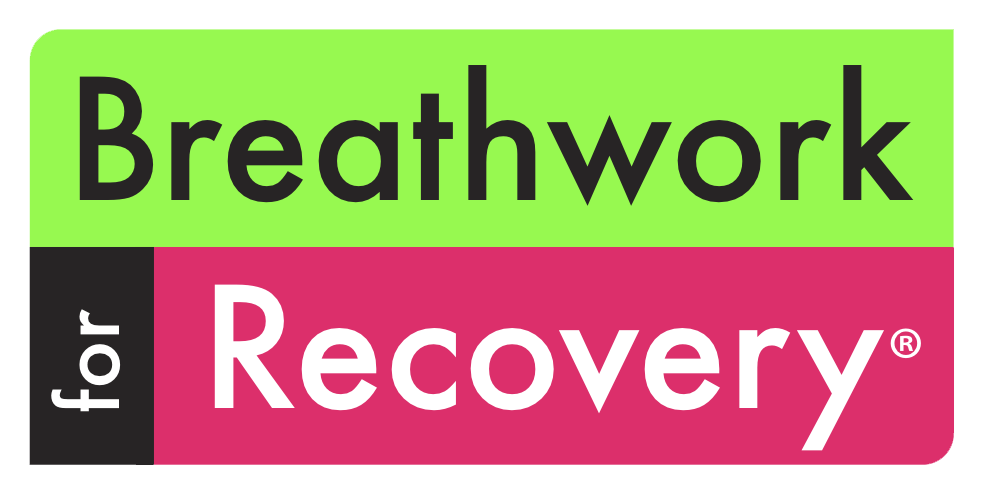WHAT IS BREATHWORK?
WHAT DOES IT HAVE TO DO WITH RECOVERY?
Breathwork is a simple (though not always easy) breathing technique that assists in integrating trauma, developing healthier thought patterns, and creating a new perspective on old behavior. This two-stage rhythm helps calm the brain and allows clients to experience a more tangible connection to their bodies. This practice allows clients to become more aware of buried emotion and deep-seated trauma while identifying the necessary steps toward healing those wounds.
The breath practice we teach is a two-part breath done through the mouth, not dissimilar to CCB. Its origins are currently unknown, but we are working to uncover its roots. Nathaniel studied the work under his former mentor for 12 years, until he left for ethical reasons, and no real lineage of this work was ever taught. It most likely is a modified Kriya technique like rebirthing, but we are on the journey to discover its genesis so we can give appropriate credit to this practice.
Because breathwork doesn’t depend on conscious thought, it is able to successfully circumnavigate the defense mechanisms and roadblocks typically encountered during conventional talk therapy and, often after just one session, clients are able to see and feel the nurturing effects.
Breathwork isn’t magic, though it sometimes can feel exactly that. This breathing techniques ultimately distracts the mind long enough to provide clients with a respite from its incessant chatter and desperation to “figure it all out.” Results vary from person to person, but most clients report a reduced level of anxiety, a sense of being consciously present and connected, and in many cases having had “a spiritual experience” — often for the very first time. Self-judgment is reduced, self-love is achieved, and most importantly, clients gain awareness that they have the power to generate the same sense of relief that they had previously only been able to find by using drugs and alcohol.
We use this powerful breathing technique in drug and alcohol rehabilitation centers because it provides profound efficacy at helping clients become mindful of — and eventually bypass — the issues that prevent them from dealing with suppressed emotion and trauma in a healthy way.
Breathwork is by far the fastest relief method that Breathwork for Recovery founder Nathaniel Hodder-Shipp and his team have seen (aside from using, of course) and this instant gratification especially appeals to those suffering from substance use disorders. Breathwork oxygenates the hypothalamus gland and releases endorphins and neuropeptides, which create a feeling of peace and well-being, and helps clients access parts of themselves that have been kept buried their entire lifetimes. The technique also stimulates the vagus nerve, which helps combat anxiety and pull clients out of a “fight, flight, or freeze” response, and every session takes place in a safe and therapeutic environment that has clients’ best interests in mind. This technique helps get the nervous system back into regulation from the dysregulated state which often accompanies the experience of trauma.
Breathwork is commonly called an active meditation, but we assure you it does NOT require you to sit silently. Breathwork is where deep work gets done; we drudge up the deep stuff so it can no longer control our behavior unconsciously. It’s confronting. It can be uncomfortable. But the greatest changes come in the midst of the greatest challenges. It’s not about avoiding the water – it’s about learning to boldly navigate the waves.
For more information or to schedule a meeting, please contact Nathaniel Hodder-Shipp at (888) 690.BREATH (2732) or info@breathworkforrecovery.com
Breathwork for Recovery® is not only for those in treatment centers — Nathaniel also runs The Recovery Circle, the nation’s only donation-based support group that incorporates breathwork techniques and has made it available and accessible to all, regardless of socioeconomic status, gender, sexual orientation, race, or religion. The Recovery Circle is a weekly Los Angeles-based group dedicated to using breathwork as a pathway to long-term recovery.
*In Fall 2021, I made the heart-wrenching and difficult decision to leave my old mentor’s breathwork community, as I could no longer ethically be associated with him or his teachers due to the legacy of harm outlined by Breathwork for the People.
What they did was an important step in healing the breathwork community and took a tremendous amount of courage. I remained in his breathwork community for a year and a half hoping to be a part of the important changes urged by Breathwork for the People and several other community members throughout the years, and to make it a better program and safer, more affirming space for Black, Indigenous, and People of Color as well as folks from the LGBTQIA+ community. The issues outlined in the letter were not remedied, however, and the changes were not made. So I left the community in order to build one that represents the values and justice focus that I and so many others hold true.


